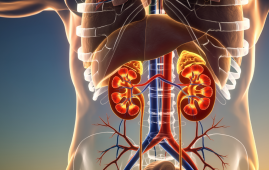

Researchers examined whether Roux-en-Y gastric bypass surgery (RYGB) lowers cardiovascular risk factors separately from calorie restriction and weight loss in a recent study that was published in JAMA Surgery.
Context
For patients with extreme obesity, bariatric surgery is a more effective means of lowering body weight and cardiovascular disease risk factors than nonsurgical treatment. It’s linked to a decreased chance of heart attacks and death overall. But it’s unclear exactly what the surgery, calorie restriction, or weight loss will accomplish.
Although the underlying mechanisms are unknown, Roux-en-Y gastric bypass (RYGB) also lowers cardiovascular risk factors, morbidity, and death. In terms of pancreatic beta-cell function, body composition, insulin sensitivity, or glucose parameters, some research found no differences between RYGB and diet; however, other studies found greater improvements in these areas, as well as the disposition index and insulin sensitivity, following RYGB.
Concerning the study
The current non-randomized controlled trial assessed how changes in cardiovascular risk factors occurred over a period of six weeks in obese patients who had either Roux-en-Y gastric bypass surgery or a very low-energy diet (VLED, less than 800 kcal/day) with associated calorie restriction and weight loss.
In a Norwegian tertiary care clinic, the researchers carried out the COCKTAIL trial, which examined the effects of body weight, low-calorie diet, and gastric bypass on drug bioavailability, cardiovascular risk factors, and metabolic biomarkers. Severely obese adults with stable body weight who were considering VLED or RYGB were included in the trial. The first patient visit was on March 18, 2015, and the last (nine-week follow-up) was on August 9, 2017. The recruitment process started on February 26, 2015. Data gathered between 30 April 2021 and 29 June 2023 was examined by the researchers.
Three weeks of LED (less than 1,200 kcal/day) before either a six-week VLED regimen (n = 37) or a six-week VLED regimen after RYGB (n = 41) were the study interventions. The study involved intergroup comparisons of short-term (less than six weeks) changes in cardiovascular risk variables, including blood pressure, blood lipids, waist-hip circumference, body mass index (BMI), total body fat, insulin sensitivity, fasting glucose, and cardiometabolic biological markers.
The patients receiving RYGB vs. VLED with corresponding weight reduction were assessed by the researchers at week 0 (study beginning), week 3 (end of LED), week 5, and week 9 to evaluate changes in protein/peptide, metabolite, and bile acid. C-peptide, heart rate, total cholesterol, lipoprotein (a), triglycerides, apolipoprotein B, low-density lipoprotein (LDL), high-density lipoprotein (HDL), lipoprotein (a), and fat mass were among the evaluation criteria.
As part of the experiment, participants received weekly consultations with a dietician to improve dietary adherence. Surgeons at the hospital performed routine laparoscopic RYGB and used a four-day food journal to track adherence. Insulin sensitivity is assessed using the Homeostasis Model Assessment estimate of insulin sensitivity (HOMA).
In order to analyze the data, the researchers used linear mixed-effects modeling, correcting for therapy type, duration, age, and gender. The bioavailability and disposal of medications like midazolam, as well as cardiovascular metabolism, were the focus of the exploratory objectives. For exploratory results, the researchers planned to include 40 individuals each group, with at least 15 patients with type 2 diabetes and at least 15 patients with normal-range glucose tolerance.
Outcomes
The mean age of the 78 patients was 48 years; 77 (99%) were white, and 65% (n=51) were women. The RYGB group had a slightly higher mean BMI (44.5) than the VLED group (41.9), but other than that, the groups’ baseline clinical and demographic features were the same. Despite similar reduction of fat mass, after RYGB compared to VLED, primary atherogenic serum lipid components such as LDL, non-HDL, apolipoprotein B, and lipoprotein (a) were decreased. The geometric mean ratio was 0.6 U/L. The related inter-group differences (mean) were −18 mg/dL, −17 mg/dL, and −9.9 mg/dL. Blood pressure and glycemic control changes were comparable throughout groups.
The mean difference in weight loss between the RYGB and VLED groups was 2.3 kg. The third and fifth weeks had the most shift in body weight, which persisted at that point. Following RYGB, apolipoprotein B and lipoprotein (a) were decreased but not VLED. RYGB caused significant lipid and metabolite alterations, including a decrease in the ratio of omega-6 to omega-3 fatty acids and 21 more lipids (2%) compared to the VLED group.
In summary
According to the study, RYGB can lower cardiovascular risk without affecting weight loss, especially in those who are extremely obese. Six weeks following RYGB, but not after VLED, the researchers saw lower levels of primary atherogenic lipids despite comparable reductions in fat mass. HbA1c, blood pressure, and insulin sensitivity all improved in both groups, with the first three weeks of the LED period showing the greatest metabolic gains.
For more information: Gastric Bypass vs Diet and Cardiovascular Risk Factors: A Non-randomized Controlled Trial, JAMA Surgery, DOI: 10.1001/jamasurg.2024.2162
more recommended stories
 Phage Therapy Study Reveals RNA-Based Infection Control
Phage Therapy Study Reveals RNA-Based Infection ControlKey Takeaways (Quick Summary) Researchers uncovered.
 Pelvic Floor Disorders: Treatable Yet Often Ignored
Pelvic Floor Disorders: Treatable Yet Often IgnoredKey Takeaways (Quick Summary) Pelvic floor.
 Urine-Based microRNA Aging Clock Predicts Biological Age
Urine-Based microRNA Aging Clock Predicts Biological AgeKey Takeaways (Quick Summary) Researchers developed.
 Circadian Control of Neutrophils in Myocardial Infarction
Circadian Control of Neutrophils in Myocardial InfarctionKey Takeaways for HCPs Neutrophil activity.
 E-Cigarette Use and Heart Attack Risk in Former Smokers
E-Cigarette Use and Heart Attack Risk in Former SmokersKey Takeaways for Clinicians and Nurses.
 36-Week Pre-eclampsia Screening May Reduce Term Risk
36-Week Pre-eclampsia Screening May Reduce Term RiskA New Preventive Strategy for Term.
 Cardiovascular Risk and Sudden Cardiac Death in Diabetes
Cardiovascular Risk and Sudden Cardiac Death in DiabetesRising Sudden Cardiac Death (SCD) Risk.
 Poor Kidney Function and Alzheimer’s Biomarkers Explained
Poor Kidney Function and Alzheimer’s Biomarkers ExplainedPoor kidney function may influence levels.
 Walking Speed Before Hip Replacement Predicts Recovery
Walking Speed Before Hip Replacement Predicts RecoveryNew Evidence Points to a Simple,.
 Neuroblastoma Drug Combo Extends Survival in Models
Neuroblastoma Drug Combo Extends Survival in ModelsA Promising Shift in High-Risk Neuroblastoma.

Leave a Comment